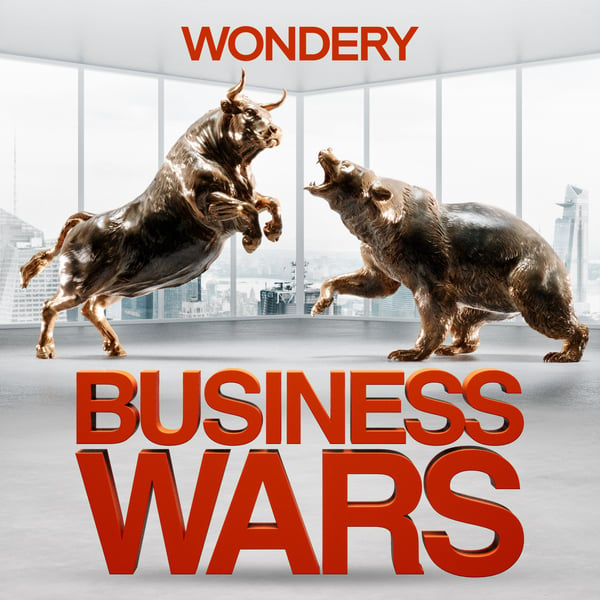Diamond Wars | The Future of the Diamond Industry | 8
Business Wars
Wondery
4.6 • 13.2K Ratings
🗓️ 20 July 2020
⏱️ 23 minutes
🧾️ Download transcript
Summary
Today we conclude our Diamond Wars series.
These precious stones are known to be undeniably beautiful, rare and a symbol of luxury. But diamonds have also been associated with war, human rights abuses and death. In response, consumers these days are demanding more transparency about where stones are sourced. Some are seeking out less expensive gemstone alternatives or lab-grown diamonds. And even powerhouse companies like De Beers have taken strides to adapt.
To find out more about the future of the diamond industry we’ll hear from Paul Zimnisky, an independent global diamond industry analyst.
Listen ad-free on Wondery+ here
Support us by supporting our sponsors!
See Privacy Policy at https://art19.com/privacy and California Privacy Notice at https://art19.com/privacy#do-not-sell-my-info.
Transcript
Click on a timestamp to play from that location
| 0:00.0 | Hey, Prime members, you can listen to Business Wars Add Free on Amazon Music. Download the app today. |
| 0:14.0 | I'm David Brown and this is Business Wars. |
| 0:30.0 | Today we conclude our Diamond Wars series. These precious stones are known to be undeniably beautiful, rare and assemble of luxury, but dazzling as they are. Diamonds have also been associated with war, human rights abuses, and death. |
| 0:52.0 | Not to mention they cost money that plenty of millennials and zoomers would soon have been traveling, that is, if any of us ever feel safe getting on a plane again. As tastes change, so does the diamond industry. |
| 1:05.0 | But whether the economy was in crisis or movies like Blood Diamond exposed the ugliness behind the diamond trade, companies like Debeers and Tiffany have stood the test of time, and even created demand where there was none. |
| 1:18.0 | Who could forget the Debeers 2003 right hand ring campaign? Well now consumers seem to be controlling the narrative around the diamond industry, whether it's demanding more transparency about where stones are sourced, or seeking out less expensive gemstone alternatives or lab-grown diamonds. |
| 1:35.0 | Consumers under 40 haven't stopped buying jewelry, they're just changing the game, and even powerhouse companies like Debeers have taken strides to adapt. |
| 1:43.0 | To learn more about the future of the diamond industry, we've invited Paul Zimniski to join us, he's an independent global diamond industry analyst. |
| 1:50.0 | We'll talk about how younger generations are creating different demands for diamonds than their parents have, and how the industry is fairing amid the economic threat of COVID-19. That's all coming up next. |
| 2:01.0 | Hi, I'm Lindsey Graham, host of Wondering's Podcast American Scandal. Our newest series looks at the trial of the Chicago Seven, a case involving protests of the Vietnam War and the legal fight that became a referendum on the soul and future of America. |
| 2:21.0 | Listen to American Scandal on Amazon music, or wherever you get your podcasts. |
| 2:26.0 | In a four-part series, the Generation Y Podcast unravels the story of Khalif Browder, a young boy falsely accused of stealing a backpack and held it records island for three years without trial. |
| 2:38.0 | This is a story about a young life caught in the middle of the justice system. Listen to Generation Y on Amazon music, or wherever you get your podcasts. |
| 2:47.0 | Paul Zimniski, welcome to Business Wars. |
| 2:54.0 | Hi, thanks for having me. |
| 2:56.0 | So let's talk about how younger generations have affected the diamond market. You have millennials and zoomers asking retailers for more transparency to make sure the diamonds they consider buying are sustainably produced or mined and conflict-free. |
| 3:07.0 | How have the luxury powerhouse brands been adapting to demands for conflict-free diamonds? |
| 3:13.0 | So I think the key to all of this is getting to the point where natural diamonds come with a source of origin, verification at the point of consumer sale. |
| 3:23.0 | I think by doing this, the consumer knows the diamond is in fact a real natural diamond. They know it's not a conflict diamond. |
| 3:30.0 | And then I think in addition knowing the providence of a diamond, it increases the emotional appeal. |
| 3:36.0 | And I think it makes a diamond more interesting and enhances the story. And I think when a consumer is buying especially a higher end diamond, like an engagement ring diamond and the cost can be in thousands of dollars, consumers want that detail, they want that information. |
| 3:50.0 | And then I think, again, you provide a provenance and I think it gets a consumer thinking about the relatively rarity of the diamond and the long and difficult exploration process, the complex production process, the idea that the diamond could have come from a very remote part of the world. |
... |
Please login to see the full transcript.
Disclaimer: The podcast and artwork embedded on this page are from Wondery, and are the property of its owner and not affiliated with or endorsed by Tapesearch.
Generated transcripts are the property of Wondery and are distributed freely under the Fair Use doctrine. Transcripts generated by Tapesearch are not guaranteed to be accurate.
Copyright © Tapesearch 2025.

